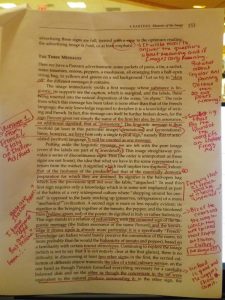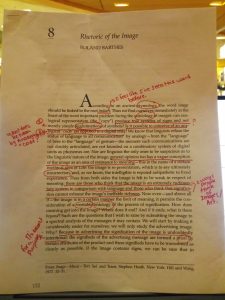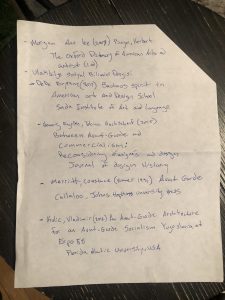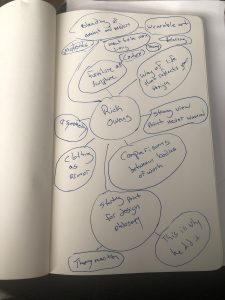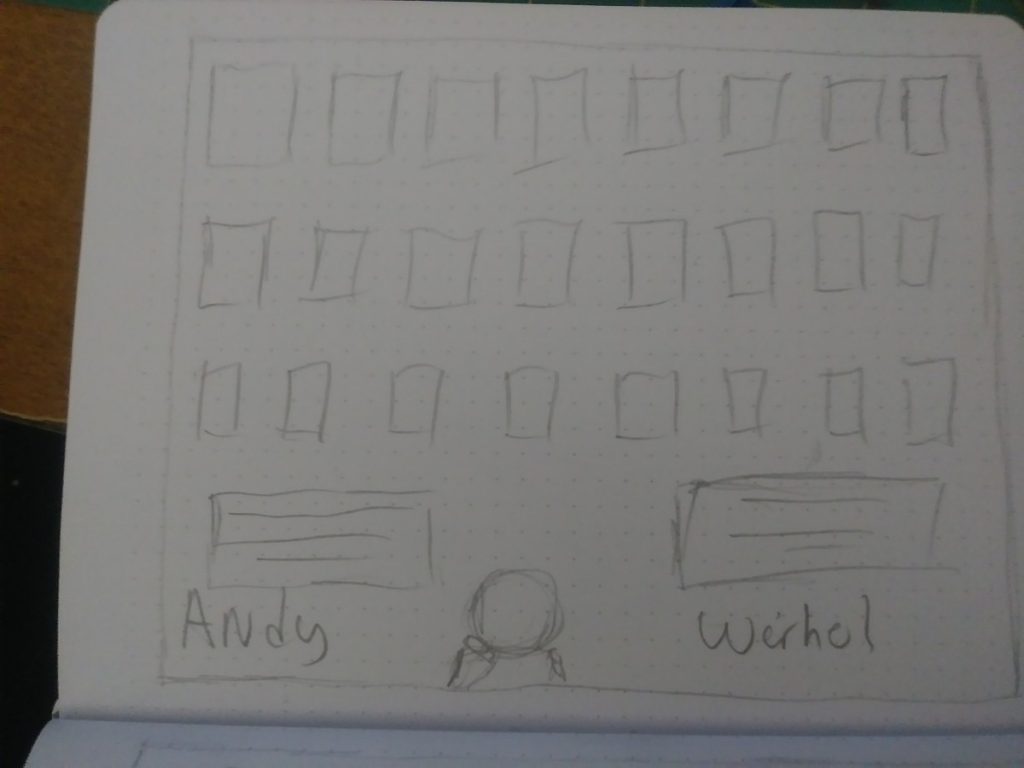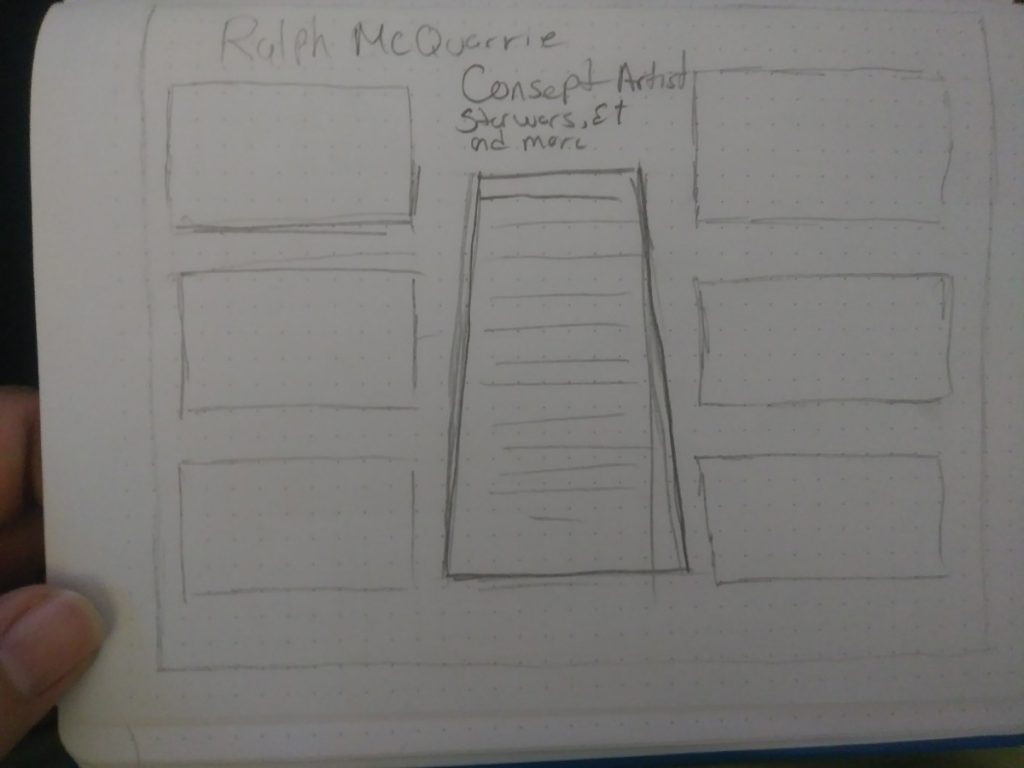Year: 2019
ZIKAI CHEN-October 28
“Medium is the message” McLuhan’s summary of the status and role of the media in the development of human society. McLuhan elaborated on the role of the media from a social perspective: that is, in the long run, the truly meaningful message is not the content that the media of each era prompts people, but the media itself. The content delivered by the media of each era is generated according to the communication tools of each era.
McLuhan believes that the media is an “extension of human”, The media allows people to cross the gap between time and space, and the medium is an extension of human beings. Broadcasting allows us to hear farther, newspapers let us see farther, and television is all-round that allows us to maximize our perceptions at multiple levels of audiovisual. and this extension of the media, in turn, shapes and controls the scale and form of human relations and human actions.
The technological progress does not necessarily cause hazards in its current age, in fact, it pushes the society forward, For society, the medium is the fundamental driving force for social development or the symbol that distinguishes different social forms. McLuhan divided human civilization into three stages: the era of oral communication, the era of print communication, and the era of electronic communication. The characteristics of the times of each era are determined by the media. McLuhan made the Franch Revolution as an example, The background of the French Revolution, in addition to the historical factors we know, There are media forms change factors, That is, the transition period from the oral to printing, The saturated publication helped France achieved national identity. Therefore, new technology or medium plays a crucial part in society.
The emergence of new media in each era has had a great impact on the emergence of relevant information and media organizations, and changes in human thinking. Many new media people have emerged as the times have come, to get rid of the traditional working model, escaped from 9-5 jobs, creating their own identity through the Internet, creating their own platform to publish their knowledge and network teaching. These are the new channels that the Internet has brought us. What we can do is to grasp every opportunity to achieve ourselves, find every vent, and ride the wind and waves.
Angel O Dec 2 HW
Angel O Nov 25 HW
Assignment for December 9
It should be perfectly clear by now that final research projects are due on December 9. If you have any questions concerning the poster or presentation please refer to the project Guidelines or email me: mlange@citytech.cuny.edu
Please also remember that there are two components of the final that are due in conjunction with your poster, (1) your bibliography and (2) your research journal.
(1) Your bibliography must be at least 10 sources including scholarly articles and books, preferably from the library (with websites listed in addition to these). The bibliography must be a new Post on our OpenLab site, titled “Your Name Final Bibliography”.
(2) Your research journal should be a compilation of all submitted assignments from the semester and your notes from in and out of class. Please bring your full journal, with all assignments (handwritten or printed from your OpenLab posts) to class on the 9th.
Monica J. Dec 2
“Long Live Modernism: Massimo Vignelli Reaffirms His Faith in Form and Function.” AIGA, https://www.aiga.org/inspiration-massimo-vignelli-long-live-modernism
Massimo Vignelli, Acclaimed Modernist Architect and Graphic Designer, Dies at 83.” Archinect, https://archinect.com/news/gallery/100517642/2/massimo-vignelli-acclaimed-modernist-architect-and-graphic-designer-dies-at-83.
Martin, Douglas. “Massimo Vignelli, Visionary Designer Who Untangled the Subway, Dies at 83.” The New York Times, The New York Times, 27 May 2014, https://www.nytimes.com/2014/05/28/business/massimo-vignelli-a-modernist-graphic-designer-dies-at-83.html.
Staff, Creative Bloq. “What Massimo Vignelli Can Teach Designers Today.” Creative Bloq, Creative Bloq, 6 June 2014, https://www.creativebloq.com/graphic-design/massimo-vignelli-61411897.
Monica J November 25
Quotes- essay-pdf
Limmer U Barber sketch.
Rana Abdelnaby December 2
The major concept outlined in graphic design and art is concerned with the futuristic movement. The futuristic movement concentrates on associating natural beauty and humanity (Lissitzky 30). In the past 40 years, an artist influenced by Moholy-Nagy’s is Peter Halley’s Neo-Geo paintings in 1962 (Art Work Story np.). The development of the telephone painting prefigured an entire range of modern art which was inclusive of Warhols factory-produced screen paint, minimalists’ serial works. One of Halley’s artworks depicting futuristic movement is Red Cells with a Conduit Of 1962. The painting portrays the geometrical formation through symmetrical aspects by use of colored lines intersecting at a right angle.
The artist uses innovative avant-garde in the manner of social-artistic as it had materialized as a motivation to involve the artist in the promotion and development of graphic designs. Alexander Rodchenko, El Lissitzky and Moholy-Nagy and Victor Margolin had examined the engagement and changing the relationship between the social ideal along with political realities they confront. This is seen in Halley’s painting of Red Cells with a Conduit. Additionally, Halley’s painting could be explained through the concepts of David Harvey on the heterotopia in which the art can be described in terms of spaces and places. In this perspective, Halley represented his work in terms of spaces and places to define his mean theme in the red cell painting. For example, he created spaces (topia) that were used in the development of interior cell and the conduit section. The spaces could be classified based on the uniformity of the cells such as isotopia or heterotopia for the conduit section because of uniformity (Harvey no pages). Hence, it becomes easy to understand the paintings and why it has varying subsections.
Finally, Halley employs the same tactic as Moholy-Nagy where this picture displays asymmetrical formed by the two vertical black lines (Moholy-Nagy. The typography of the painting is red in the background and a horizontal line near the bottom that contains the two symmetrical short black borders that reaches the middle of the painting (Art Work Story np.). according to typography in a picture creates a new design and look that audience can interpret in a new tempo as is created through paint, brush rather than use of technology (Moholy-Nagy 34; Rodchenko 23). However, this art is not per Barthes indication that required iconic message and linguistic signs. Yet, the picture takes underground mainstream as it evolved that helps the views have a sense of sight and touch (Heller 101). Also, in the movement of Neo-Geo, Halley referred to Jean Baudrillard in the aspiration of hyper realization as it was a realm of progressivism to assign the value of reality to the society.
Work cited
Art Work Story. “Artworks and Artists Of Neo-Geo.” N.d. Web https://www.theartstory.org/movement/neo-geo/artworks/
ART. “Neo-Geo – History and Concepts.” ArtWorkStory. Nd. Web https://www.theartstory.org/movement/neo-geo/history-and-concepts/
Barthes, Roland. Rhetoric of the Image. na, 1993.
Borevitz, Brad. “Super-Abstract: Software Art and a Redefinition of Abstraction.” read_me: Software Art & Cultures. Arhus, Denmark, University of Aarhus (2004): 298-312.
Halley, Peter, et al. Peter Halley: maintain speed. Distributed Art Pub Inc, 2000.
Halley, Peter. Peter Halley – Paintings from the 1980s. Conference Publication. 2017. Print.
Harriet K. Stratis, Salvesen Britt. The broad spectrum: Studies in the materials, techniques and conservation of color on paper. Archetype Publications, London, UK (2002).
Harvey, David. Spaces of hope. Vol. 7. Univ of California Press, 2000.
Heller, Stephen. “The Underground Mainstream Steven Heller “Graphics.com Interview: Steven Heller” graphics.com. 2007”
Kemp, Virginia Millner. “Theoretical Concerns In the Geometric Abstractions of Peter Halley.” (2009).
Lee, Patricia. Sturtevant: Warhol Marilyn. MIT Press, 2016.
Lissitzky, El. “Our Book.”.” Sophie Lissitzky-Küppers. El Lissitzky: Life Letters Texts. London: Thames and Hudson (1967).
Moholy-Nagy, László. “Typofoto.” Malerei, fotografie, film 8 (1925).
Prince, Mark. “Adventures of the Black Square.” Art Monthly 384 (2015): 22.
Rodchenko, Aleksandr, Varvara Stepanova, and Aleksei Gan. “Who We Are: Manifesto of the Constructivist Group.” Aleksandr Rodchenko: Experiments for the Future. Edited by Alexander N. Lavrentiev. New York: Museum of Modern Art (2005): 143-145.
Şener, Fatma, and Meltem Erdoğan. “Global Journal on Humanities & Social Sciences.” (2016).
Wallis, Brian, et al. Art after modernism: Rethinking representation. The New Museum of Contemporary Art, 1984.




